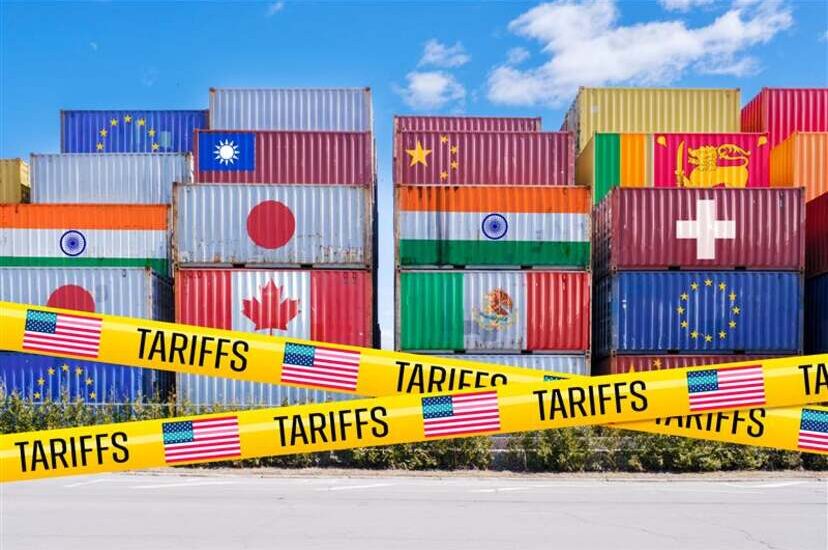- July 11, 2025
- Posted by: admin
- Categories: Supply chain financing, Blog

Tariffs have become the most debated feature of trade policy in the modern global economy. Governments often use tariffs to protect domestic industries, discourage imports or as a retaliatory measure in an escalating trade war. But the question is: Do tariffs provide any long-term benefits, or do they cause much more harm in the short term?
Let’s delve into that.
Understanding What Tariffs Do
Fundamentally, tariffs are taxes imposed on goods entering a country. Once a tariff is placed upon a good, the general expenses involved in bringing that good into the market become much heavier. Hence, the consumers in this home country pay more, while the exporters abroad lose a competitive advantage.
Tariffs were introduced mainly as a form of trade protection. Governments deliberately put tariffs on imports to deter people from buying imported goods, so they buy locally manufactured products. Essentially, the idea behind this policy intervention is to support domestic businesses, protect local jobs from foreign competition, and reduce dependence on imported products.
Short-Term Effects: The Immediate Pinch
At first, tariffs tend to have negative impacts on businesses and consumers. Increasing tariff rates means higher costs, in particular for industries that depend on imports. Manufacturing, electronics, and the auto industries are some examples. Rather, these companies will either absorb the loss or pass it to the end customer.
Probably the most visible economic effect is inflation since the prices of imported components are raised, thus putting pressure on supply chains and squeezing margins for businesses that work on tight budgets.
Disruption in the supply chain
Supply chain instability presents another critical short-term issue. After the launch of a new tariff policy, many companies rush to have alternative sources of supply, rescheduling their routes; this unpredictability damages the flow of goods and delays their production schedules.
Logistics planning is complicated when cross-border trade is concerned. Operational inefficiencies are seen and simultaneously delay delivery timelines, thus involving both customers and clients in leading to dissatisfaction.
Taxes as a Political Tool
These taxes have proved to be effective economic instruments, but also very important strategically. Countries are known to retaliate through tariffs on imports of each other’s goods during trade disputes. Such trade wars can escalate to an extent that the effects are felt on a wide scale by global commerce.
The recent trade tensions between the U.S., China, and the EU were a clear reminder that tariffs can disrupt even the strongest trade relationships. Though the intention is to get better deals, the effect on industries can be felt for months or years.
Do Tariffs Bring Permanent Benefits?
Now, here’s the flip side: Some experts will argue that tariffs can be quite useful in the long run. Restrictions on imports could allow room for domestic industries to develop and innovate, ultimately gaining global competitiveness.
Industrial development has always been a reason for maintaining certain tariffs. South Korea and Japan used all the restrictive measures they developed to further guard their industries at home from global competitors.
A Boost for National Manufacturing
Tariffs serve the purpose of encouraging companies to reposition their manufacturing close to home. This minimizes foreign supplier dependence, creates local jobs, and enhances supply chain resilience.
This reshoring trend has gained quite some traction in the recent past, especially after the disruptive effects of the pandemic. Companies are starting to consider global strategies that include long-term local operations, instead of just choosing cheaper international options.
Effect on Emerging Markets
It is interesting to note that as tariffs are imposed on traditional trade partners by larger nations, other nations often seize the opportunity. India, Vietnam, and Mexico have all benefited from the rise in exports triggered by this effect, positioning themselves as worthy competitors in the reconfigured global supply chain by providing competitive alternatives and favorable trade terms.
Emerging economies also benefit from this diversion of trade routes that catalyzes investments and opens doors to long-term trade arrangements. For these nations, tariff schemes of developed countries can be turned into a strategic advantage.
The Real Sufferers-Consumers
One of the groups that bear the brunt of tariffs without much rest is the final consumers. Much increased grocery bills, costlier electronics, and delayed product access- all these phenomena are felt by the common people.
These scenarios indicate that consumer spending slows down and can be potentially disastrous in affecting the general economy. Domestic enterprises should indeed be protected from dumping; however, when consumers are ignored regarding purchasing power, it creates a domino effect on the entire economy.
Balancing Policy and Progress
So what’s the bottom line? Are tariffs worth it or not? As discussed, tariffs are like most policy tools, depending on how they are executed and where they are employed. With tariff pain is short-term as it gives higher costs, disrupted supply chains, and slowed economies. However, proper approaches and visions towards the long term can yield strategic advantages–increased national industries, reduced foreign dependency, and a more balanced trade relation.
Its key is to get the right policy balances to protect local businesses without isolating them from global partners.
Conclusion
Tariffs are not simple black and white measures. They have their reasons for existing in a certain economic environment and sometimes have their own side effects. When it comes to dealing with today’s hybrid trade, the smart way is agile, diversification in sourcing, and an eye on global trends. In the game of global trade, adapting fast matters more than resisting change.
In a world being shaped by the changing patterns of tariffs and the uncertainties of global trade, having a reliable financial partner makes all the difference. Credlix empowers exporters by bringing them smart, collateral-free supply chain finance and instant working capital solutions. Whether you are getting used to the new tariff rules or planning your next shipment, Credlix ensures your business stays liquid and competitive without the wait.